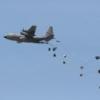If SOS in-residence attendance is 100%. The SOS correspondence course is of no value and merely drains resources we cannot afford.
For any PME courses when attendance cannot be 100%, I would offer the following:
The correspondence versions of ACSC and AWC are almost as old as the independent Air Force itself (1948 and 1949, respectively). We have gone through this “practice bleeding” conversation before, at one point people even believed it was going to change. It didn’t. It may this time, but the best we should hope for is that the game of “whack-a-mole” doesn’t produce a more undesirable outcome.
Despite Air Force policy stating (AFI 36-2301 did at some point, I have no idea if it still does), “ideally, all officers will attend PME in residence.”, yet only the “top 20 percent” of officers promoted to the rank of major are designated as “DE selects”. For the “candidates” left out, the opportunities to get an in-residence slot are dismal, meaning that for the vast majority of active FIELD GRADE officers, correspondence is the only PME they will ever see. While these “candidates” are not your “golden boys”, many of them are tomorrow’s leaders. Current events (i.e. RIF, VSP, and Pensions) will only drive this closer to the mathematically defined disparity...imagine we are talking about upwards of 80% of your “leaders” running around.
I think it’s a mistake to tell a “candidate” FGO that completing PME via correspondence shouldn’t be done until later (when all hope of in-residence attendance is gone…news flash it already is). You see, the problem is you’re creating reactionary policy that does not address the real issue. If “we” choose not to change the system, then I believe we are providing the supposedly “enhanced” education to the wrong group. The “top 20 percent” are the ones that should strive via self paced study, where the group just below them requires the more hand-on approach to “fill in the gaps” in leadership competency.
Speaking of competencies, Air Force doctrine would have you believe, “Competencies are attributes an individual possesses to successfully and consistently perform a given task, under specified conditions, or meeting a defined standard of performance.” Yet nowhere in the Air University’s guidance or CJCSI 1800.01 (Officer PME Policy) is there a concept of “proficiency advancement”, where officers that already possess the ability to meet the intended objectives can be moved along to make room for those that need developmental education in order to “enable [them] to perform their jobs and contribute to the overall success of the Air Force.” Admittedly, the current PME construct pre-dates these definitions within Air Force doctrine; however, I struggle to determine what senior leaders are for if not to adjust out of date practices to current and evolving doctrine.
I am not a fan of “practice bleeding” and we should change it. However, the idea that you will eliminate this via a single policy is difficult to believe. When the Air Force unmasked possession of a master’s degree for the O-4 promotion board, all of a sudden ACSC popped up with the option to earn a master’s degree. When the AAD has been mask to the O-4 promotion board (despite being told not too), SR began using AAD completion to determine DR allocation for they’re quotas. A single policy is insufficient to produce institutional change. We must address the entire construct of PME to do anything productive here, not simply admit to EVERYONE (including the enlisted force) that the FGO doesn’t really need what we are offering them in order to do their jobs.
The evidence of developmental educations efficacy remains with an officer performance after graduation. “Those officers who access education to fill their developmental needs would be expected to outperform similar officers who do not, in the same way that an MBA does not guarantee success, it is how the graduate applies the MBA that ultimately matters.” If there is no need for an FGO to complete PME as soon as possible, then there is no need for an FGO to complete PME at all.
Bendy











